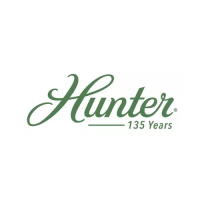Hunter e36 • Glossary
15.4
Leech: 1, the after edge of a triangle sail; 2, both side
edges of a square sail.
Leehelm: the tendency of a boat to bear away from the
wind.
Lee shore: a shore on to which the wind blows.
Leeward: away from the wind; the direction to which the
wind blows.
Leeway: the sideways movement of a boat off its
course as a result of the wind blowing on one side of
the sails.
Lifeline: a wire or rope rigged around the deck to pre-
vent the crew falling overboard.
Limber holes: gaps left at the lower end of frames
above the keel to allow water to drain to the lowest point
of the bilges.
List: a boat’s more or less permanent lean to one side,
owing to the improper distribution of weight, e.g., ballast
or water.
Log: 1, an instrument for measuring a boat’s speed and
distance traveled through the water; 2, to record in a
book the details of a voyage, usually distances covered
and weather.
Luff: the forward edge of a sail. To luff up is to turn a
boat’s head right into the wind.
Luff groove: a groove in a wooden or metal spar into
which the luff of a headsail is fed.
Lurch: the sudden roll of a boat.
M
Marlin spike: a pointed steel or wooden spike used to
open up the strands of rope or wire then splicing.
Mast Step: the socket in which the base of the mast is
located.
Measured mile: a distance of one nautical mile mea-
sured between buoys or transits/ranges ashore, and
marked on the chart.
Member: a part of the skeleton of the hull, such as a
stringer laminated into fiberglass hull to strengthen it.
Meridian: an imaginary line encircling the Earth that
passes through the poles and cuts at right angles
through the Equator. All lines of longitude are meridians.
Mizzen: 1, the shorter, after-mast on a ketch or yawl; 2,
the fore and aft sail set on this mast.
N
Navel pipe: a metal pipe in the foredeck through which
the anchor chain passes to the locker below.
Noon Sight: a vessel’s latitude can be found, using a
sextant, when a heavenly body on the observer’s merid-
ian is at its greatest altitude. The sight of the sun at
noon is the one most frequently taken.
O
Off the wind: with the sheets slacked off, not close-
hauled.
On the wind: close-hauled.
Out haul: a rope used to pull out the foot of a sail.
Overall length (OAL): the boat’s extreme length, mea-
sured from the foremost past of the bow to the aftermost
part of the stern, excluding bowspirt, self-steering gear
etc.
P
Painter: the bow line by which a dinghy, or tender, is
towed or made fast.
Pintle: a rudder fitting with a long pin that fits into the
gudgeon to form a hinged pivot for the rudder.
Pitch: 1, the up and down motion of the bows of a boat
plunging over the waves; 2, the angle of the propeller
blades.
Point of sailing: the different angles from which a boat
may sail; the boat’s course relative to the direction of
the wind.
Port: the left-hand side of the boat, looking forward
(opp. of starboard).
Port tack: a boat is on a port tack when the wind strikes
the port side first and the mainsail is out to starboard. A
boat on the port tack gives way to a boat on a starboard
tack.
Position line/ Line of position: a line drawn on a chart,
as a result of taking a bearing, along which the boat’s
position must be, i.e. two position lines give a fix.
Pulpit: a metal guard rail fitted at the bows of a boat to
provide safety for the crew.
Pushpit: a metal guard rail fitted at the stern.
Q
Quarter: the portion of the boat midway between the
stern and the beam; on the quarter means about 45
degrees abaft the beam.
R
Rake: the fore and aft deviation from the perpendicular
of a mast or other feature of a boat.
Range: 1, see transit; 2, of tides, the difference between
the high and low water levels of a tide; 3, the distance at
which a light can be seen.
Rating: a method of measuring certain dimensions of a
yacht to enable it to take part in handicap races.
Reach: to sail with the wind approximately on the beam;
all sailing points between running and close-hauled.
Reef: to reduce the sail area by folding or rolling surplus
material on the boom or forestay.
Reefing pennant: strong line with which the luff or
leech cringle is pulled down to the boom when reefing.
Rhumb line: a line cutting all meridians at the same
angle; the course followed by a boat sailing in a fixed
direction.
Riding light to anchor light: an all-around white light,
usually hoisted on the forestay, to show that a boat

